Recently I wrote and passed the written exam for the PPL. I had put it off for a very long time. With all the breaks in my flight training, the gap between ground school had grown quite large.
I finally decided that enough was enough and I had to get the test out of the way. So I had myself “grounded” – no distractions. No flying. It’s much more glamorous to fly rather than study about flying – but in reality, studying is a huge part of aviation.
What I would recommend the most is to write it as soon as possible after finishing ground school and while flying. Actually getting out and flying while attending ground school or studying ground school topics solidifies some of the subject areas. Specifically, they make theory of flight, instruments, and air law easier to understand. For example, when you use wind inputs for taxiing, you already know how that works, you know that in a right turn your right aileron is up, and you know about lift, and some general things about aircraft performance. You know weight and balance. If you fly out of a busy airport, like I do, you quickly learn about airspace and how to talk to controllers.

I recommend some resources for studying. These tools really helped me.
Top Books for Studying
1. Private Pilot Answer Guide
This book is undoubtedly the best resource you can have. Once you study each subject area in detail, I recommend writing the practice questions in this guide. Write them again and again. This item is now available in our store.
2. From the Ground Up (FGU)
Not surprising, the Canadian “bible” for aviation, is a constant reference resource, filled with a lot of useful information on weather, navigation, general aeronautical knowledge, aero engines – everything! Have it handy. Take it with you everywhere.
3. From the Ground Up Workbook
Tests specific concepts in FGU. This workbook is great as it asks very detailed questions on subject areas presented in FGU. It also provides answer references so you can look up the answers in the text book. Having the workbook forces you to browse FGU and look up information, and helps you learn it. This item is also available in our store.
4-6. Protractor, Ruler and E6B
These tools come with the ground school kit. You will need these to make your calculations for flight planning. Know how to use your E6B. This calculator comes with a booklet with practice questions. Go through them and make sure you understand how it works.
7. VNC Map
The 1:500,000 scale map is used for flight planning. Write all over it, plan lots of flights to learn your nav!
8. AIM
The Aeronautical Information Manual. Use the manual to look up regulations and various topics, such as weather. The weather portion of this manual is very helpful (MET).
9. CARS website
Find all the links to specific regulations that you will need to answer exam questions.
10. Pilots Operating Handbook
The POH is the specific manual for your aircraft model. You will need this to look up performance data for your aircraft, such as take off runway length, performance and fuel burn at altitude, density and pressure altitude…
11. Canada Flight Supplement
The CFS is also handy to have when planning a cross country flight. It gives you airport data for all Canadian registered aerodromes. You should get used to looking up data such as runway direction, length, type of runway (turf or pavement?), service times and arrival and departure procedures.
10. Your Instructor!
Don’t forget to ask your instructor questions if you get confused. Your instructor is your greatest resource and is on your side – they want you to do well on your exam. Spending some time studying at your flight school is a good idea, so if you get stuck you can simply ask someone rather than stressing about not being able to understand something. It is common to get stuck, so having instructors and fellow aviation students around is not only inspiring but also helpful.
Also helpful:
- Air Command Weather Manual: If you have trouble understanding meterorology with or are really interested in weather, I suggest this manual. In addition, if you are planning on pursing a commercial license this explains some advanced topics that are used for the CPL, such as detail on icing and weather fronts. Weather geeks unite. Buy Air Command Weather Manual on Amazon
- Air Command Weather Workbook: Guides you step by step through the various topics presented in the Manual. If you are buying the Manual, make sure you buy the workbook as well. It is an excellent complement to the manual – it goes through each topic step by step and highlights the important concepts you need to understand. I found it extremely helpful in learning weather and highly recommend it.
And of course: Lots of caffeine!
The main tip for passing the exam is to read the questions carefully. They are very tricky, and will often present answers that are very close. Sometimes several answers are right and they ask you to choose one that is most right. They can be very sneaky, so you must be very prepared. Simulate the exam environment by writing as many practice exams as possible.

